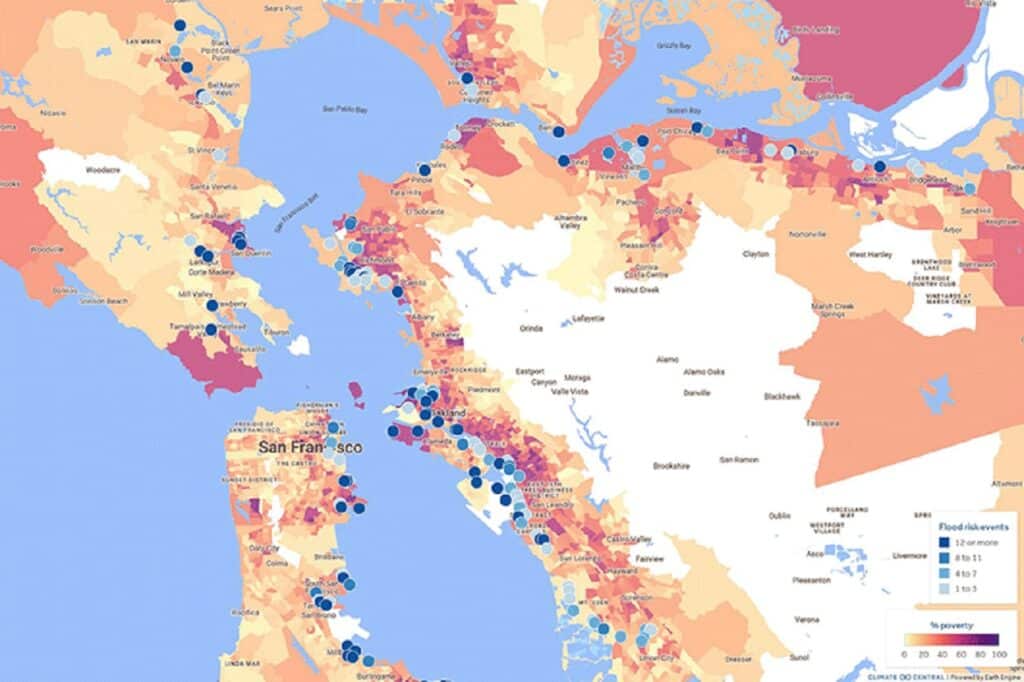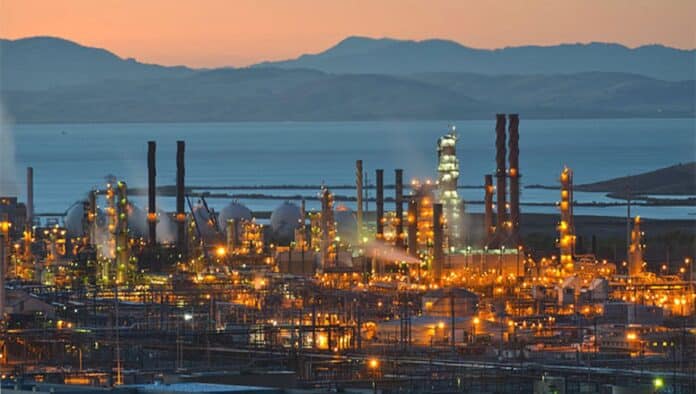The frequency and severity of the extent of coastal flooding are increasing due to sea level rise (SLR) and severe precipitation events, which can cause hazardous sites in low-income communities of color to discharge harmful substances.
The frequency of extreme coastal flooding is projected to double by 2050 due to sea level rise (SLR). SLR rates in California have closely tracked global average rates of 0.3 cm per year.
According to a recent study by scientists at UC Berkeley, UCLA, and Climate Central, the state’s most marginalized communities will be disproportionately at risk of flood-related contamination as rising sea levels could flood hundreds of toxic sites along the California coast.
The analysis identified 736 facilities in danger of coastal flooding and an additional 173 with projected groundwater disruption under California’s high-risk aversion scenario, which estimates that sea levels might rise by more than 6 feet by the end of the century. Residents within one km of at-risk places were more likely to be people of color, poor, jobless, or experiencing other social disadvantages, such as language isolation.
The researchers also launched a new interactive online tool in English and Spanish that allows users to map toxic sites at risk of coastal flooding by county or the specific facility as part of the study.
Users can additionally overlay signs of local inhabitants’ social vulnerability, such as the percentage of persons living below the poverty line, experiencing unemployment, or without a high school diploma.
Rachel Morello-Frosch, a professor of public health and environmental science, policy, and management at UC Berkeley and senior author of the paper, said, “Sea level rise is like a slow-moving storm that we can anticipate and prepare for. As California invests in community resilience to climate change, it is essential that considerations of environmental justice are at the fore.”

The possibility of increased exposure from sea-level rise will increase the disparate exposure to environmental toxins that low-income communities and communities of color currently experience.
Residents who are socially vulnerable may find it more difficult to evacuate during a flood than their neighbors do, and they frequently deal with social stressors that may make them more vulnerable to the negative health effects of pollutant exposure.
The most dangerous sites are expected to be located in San Mateo and Alameda counties by 2050. However, by 2100, Orange County is expected to surpass both because oil and gas wells there and Los Angeles County face rising risks of coastal flooding.
Lead author Lara Cushing, an assistant professor of environmental health sciences at the University of California, Los Angeles (UCLA) Fielding School of Public Health, said, “Again, climate change amplifies inequality, Sea level rise will present additional risks of contaminant releases to communities already living with pollution sources in their backyards.”
The research was conducted as part of the Toxic Tides project, which brought together a multidisciplinary research team and community advocacy organizations to understand better how rising sea levels would affect hazardous sites such as refineries, industrial facilities, sewage treatment plants, and cleanup sites.
Journal Reference:
- Rachel Morello-Frosch,Nicholas Depsky, etal. Toxic Tides and Environmental Injustice: Social Vulnerability to Sea Level Rise and Flooding of Hazardous Sites in Coastal California.Environmental Science & Technology. DOI: 10.1021/acs.est.2c07481
